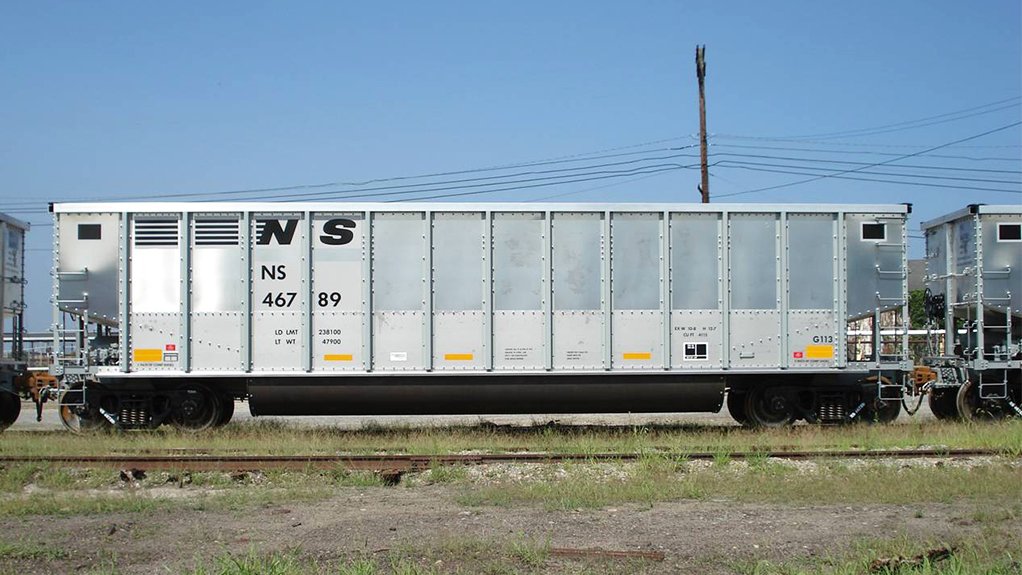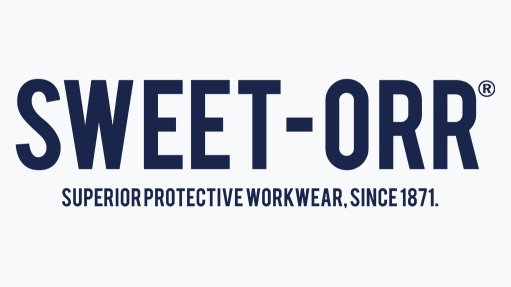Production surplus meets growing rail industry demand



STRONG AND STURDY Ferritic stainless steel contains at least 10.5% chromium
CARRYING THE LOAD 3CR12 grade stainless steel is ideal for use in ore and freight wagons owing to its strength and corrosion resistance
Although stainless steel supplier Columbus Stainless can meet South Africa’s stainless steel material demands in all sectors, including the railroad industry, the apparent stainless steel consumption is too low to fulfil the mill’s total production capacity, says Columbus Stainless market development manager Lerato Mashigo.
“We currently sell the excess capacity that is produced in our mill into most of the international stainless steel markets. Therefore, there remains sufficient capabilities and capacity within Columbus Stainless to meet the current demand and future growth demands in the domestic rail industry, as our priority ultimately lies with meeting the demands of the domestic market.”
Despite this surplus, she notes that, since the inception of the industrial revolution in the mid-eighteenth century, iron and steel have been used extensively as the material of choice in the rail industry, as well as in other sectors in the building and construction of critical components.
The requirements and developments in the manufacturing sector include extending the service lives of equipment and components at a cost-competitive price.
“To achieve this longevity, stainless steel grades are often selected as the preferred materials of construction owing to their characteristic corrosive-resistant properties, making it suitable for use in the most corrosive environments. These properties are what make stainless steel a good material for construction in a variety of applications in the rail industry, including for rolling stock, such as locomotives; rail support structures, such as electrification masts; and other complementary components, such as electrical enclosures,” explains Mashigo.
Stainless steel can also withstand harsh environments, including the ambient environment that contains moisture and industrial pollutants, making it the ideal material to use in the rail industry.
It is ideal for the transportation of dry and wet abrasive substances, such as various ores, coal and cement, as well as corrosive liquids such as certain chemicals and acids.
“Stainless steel can withstand these aggressive environments without the need for applying additional measures to ensure cost effective service. These additional corrosion protection measures used include the use of thicker design to account for metal loss in service or the use of various surface coating systems. These are measures which ultimately add to the actual cost of the structures.”
Stainless steel is therefore a breakthrough material. It reduces the cost impact throughout the life span of a component by reducing maintenance frequencies and extending service life. This is, in contrast to using conventional steels, in both the treated and untreated condition.
Meanwhile, Mashigo notes that the demand for various stainless steel grade products is driven by the demand from rail industry stakeholders.
“As a supplier, there continues to be an increasing demand for all major steel grades used in the rail industry. In the case of stainless steel the choice in material grade is governed by what the final application requires. This can be a combination of strength, fabricability and corrosion resistance. The chemical composition of each stainless steel grade gives each grade its characteristic qualities.”
For example, ferritic stainless steel contains at least 10.5% chromium which makes the 3CR12 grade ideal for use in ore and freight wagons, owing to its strength and corrosion resistance. It is also used in the construction of electrification masts. Austenitic stainless steel can be hardened and the 301 and 304 grades are ideal for use in passenger trains.
Further, while stainless steel generally has higher input costs based on its alloying elements, compared with some competing materials such as other metals, it maintains structural integrity without having to apply additional costs through surface coating systems or corrosion allowances – which adds to the initial costs of fabrication.
Over the life span of a piece of equipment or structure, stainless steel is often considered the most cost-effective long-term choice and can be determined through the use of life cycle costing models, she says.
“Additionally, stainless steel is 100% recyclable. When a stainless steel component reaches its required extended service life, it can be easily recycled and used in the production of new stainless steel products. This makes it a sustainable and environmentally conscious metal for the future,” Mashigo concludes.
Article Enquiry
Email Article
Save Article
Feedback
To advertise email advertising@creamermedia.co.za or click here
Comments
Press Office
Announcements
What's On
Subscribe to improve your user experience...
Option 1 (equivalent of R125 a month):
Receive a weekly copy of Creamer Media's Engineering News & Mining Weekly magazine
(print copy for those in South Africa and e-magazine for those outside of South Africa)
Receive daily email newsletters
Access to full search results
Access archive of magazine back copies
Access to Projects in Progress
Access to ONE Research Report of your choice in PDF format
Option 2 (equivalent of R375 a month):
All benefits from Option 1
PLUS
Access to Creamer Media's Research Channel Africa for ALL Research Reports, in PDF format, on various industrial and mining sectors
including Electricity; Water; Energy Transition; Hydrogen; Roads, Rail and Ports; Coal; Gold; Platinum; Battery Metals; etc.
Already a subscriber?
Forgotten your password?
Receive weekly copy of Creamer Media's Engineering News & Mining Weekly magazine (print copy for those in South Africa and e-magazine for those outside of South Africa)
➕
Recieve daily email newsletters
➕
Access to full search results
➕
Access archive of magazine back copies
➕
Access to Projects in Progress
➕
Access to ONE Research Report of your choice in PDF format
RESEARCH CHANNEL AFRICA
R4500 (equivalent of R375 a month)
SUBSCRIBEAll benefits from Option 1
➕
Access to Creamer Media's Research Channel Africa for ALL Research Reports on various industrial and mining sectors, in PDF format, including on:
Electricity
➕
Water
➕
Energy Transition
➕
Hydrogen
➕
Roads, Rail and Ports
➕
Coal
➕
Gold
➕
Platinum
➕
Battery Metals
➕
etc.
Receive all benefits from Option 1 or Option 2 delivered to numerous people at your company
➕
Multiple User names and Passwords for simultaneous log-ins
➕
Intranet integration access to all in your organisation



















